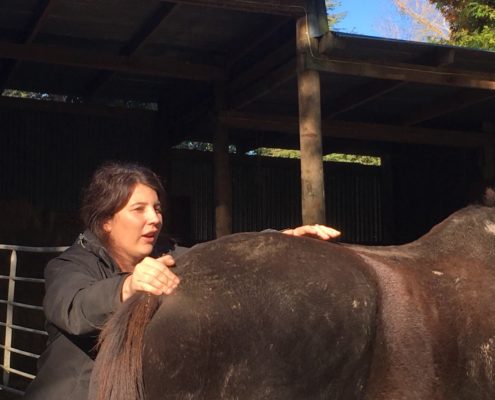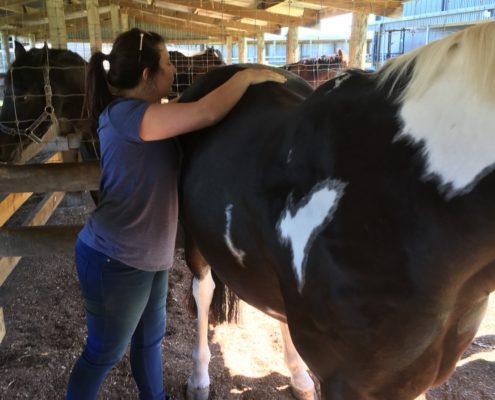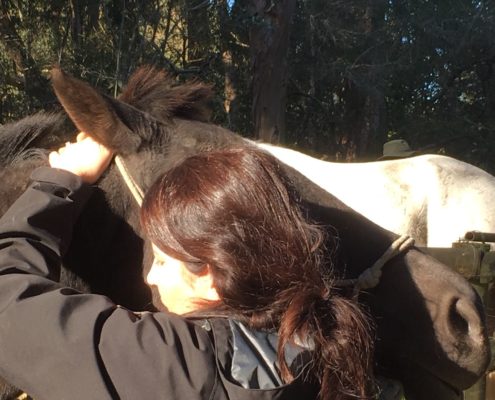Animal Osteopathy
Lana is a human and animal Osteopath. She has a Bachelor of Applied Science (Human Bio), Masters of Osteopathy, and postgraduate Diploma in Animal Osteopathy. Lana has also completed an advanced Equine Osteopathy course with Stuart Mcgregor.
Osteopathy is a holistic form of manual therapy that addresses the cause of the problem and not just the symptoms. This means we look at the whole picture not just the painful/problem area. An Osteopath will use hands on techniques to diagnose and treat the problem.
Just like people, animals can manifest musculoskeletal problems. Animals active lifestyles mean their bodies undergo constant strain, especially if they are working animals or used for competition. A supple and optimally functioning musculoskeletal system is required to accommodate for the daily demands an animals body undergoes. If the body isn’t functioning properly this can manifest as lameness, asymmetry or behavioural changes. Osteopaths can help with a speedy recovery, help to improve performance and maintain mobility.
What can be treated in animals?
- Lameness
- Back and neck pain
- Stiffness/arthritis
- Muscle asymmetries/unevenness
- Gait problems
- Head flicking/shaking
- Bucking
- Ligament sprains
- Functional kissing spine
- Jaw (TMJ) problems
- Balance and coordination
- Helping the mare recover after foaling
- Uneven Muscle Development
- Post operative Rehabilitation
- Pre/post event treatment for performance
- Behavioural changes
- Sacroiliac joint dysfunction
- Muscle tightness
- Scar tissue
- Gelding scars
- General performance
- Muscle and tendon strains
What happens in treatment?
We start the consultation by taking a case history about the reason you want you’re animal to be seen. We examine the musculoskeletal system including the muscles, joints, ligaments and spine with our hands using movement and palpation. With animals we rely on non-verbal communication, using their behaviour as ques and our hands to assess and treat.
We use the same range of techniques we do with people, just modifying them to suit the animal we are treating. It is common to work alongside a vet, saddler, dentist or farrier to ensure the best outcome for the animal.
Animals often respond well and more quickly than humans to treatment. Dogs have a much smaller tolerance to treatment compared to people so treatment times are often less. An average appointment time is approximately 30 minutes. We look at each case individually so each appointment will be catered to each animal.
Dogs can be treated in clinic. Horses can be treated at a pre-organised location. Please note travel cost may be applicable.



